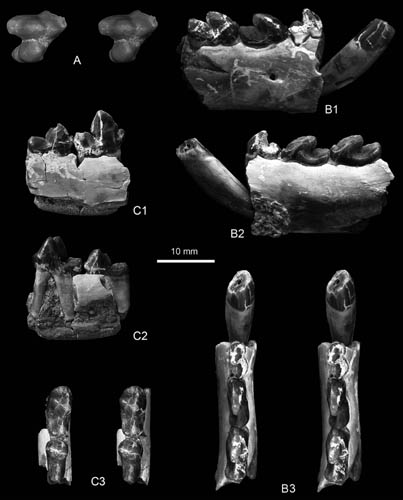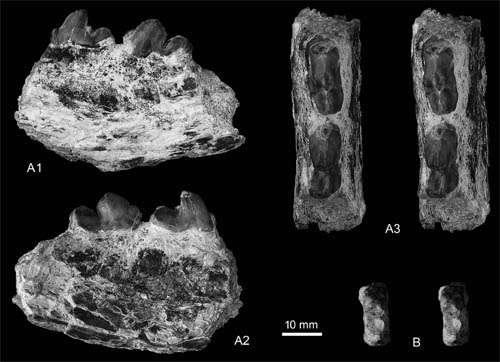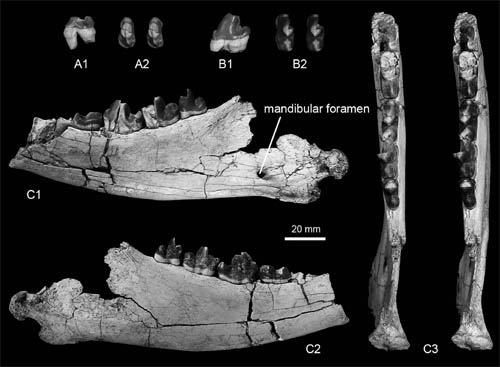Paleontologists from Institute of Vertebrate Paleontology and Paleoanthropology, Chinese Academy of Sciences, recently collected some early Paleogene (Upper Paleocene through Middle Eocene) mesonychid specimens from the Huheboerhe area and Bayan Ulan, eastern Erlian Basin, Nei Mongol (Inner Mongolia). Dr. JIN Xun described them and reported in a paper published in the latest issue of Vertebrata PalAsiatica 2012(3). These new materials represent six species and four genera, including a new species. They provide a good chance for scientists to study the succession of ecological niches occupied by mesonychians at different stratigraphic levels, and help better understand their general evolutionary trends.
Mesonychids is a group of extinct primitive mammals unearthed from Paleogene to Oligocene terrestrial deposits in Europe, North America and Asia. Mesonychids probably originated in Asia where they are most diverse and the most primitive mesonychid was found from the early Paleocene. Mesonychia has historically been associated with the origin of Cetacea, but it is now considered to be more or less closely related to ungulates.
Mesonyx nuhetingensis sp. nov., from the basal Arshanto Formation, differs from previously known species of Mesonyx in p4 being the longest lower cheek tooth and weak lingual cingula present on p3 and p4. Other mesonychid specimens are assigned to Dissacus serratus, Dissacus sp., Mesonyx uqbulakensis, Mongolonyx dolichognathus and Harpagolestes leei.
A succession of mesonychid ecological niches is clearly evident in the Erlian Basin. In the time of Gashantan and Bumbanian, Dissacus serratus and Dissacus sp. occupied the carnivore niche. The linear dental measurements of Dissacus sp. are distinctly larger than those of D. serratus. Mesonyx occupied the advanced carnivore niche in the early part of the Arshantan, and they are larger, more powerful and capable of running faster. From the middle part of the Arshantan, the mesonychids inhabiting the basin were large bone-crushing animals represented by M. dolichognathus and H. leei. The general evolutionary trends of mesonychids from the Late Paleocene through the Middle Eocene in the Erlian Basin show a gradual increase in body size and an increase in predatory capability followed by a shift to bone-crushing and presumably scavenging.
This research was funded by grants from the Knowledge Innovation Program of the Chinese Academy of Sciences, the Major Basic Research Projects of MST of China, the National Natural Science Foundation of China, and the U.S. National Science Foundation.

Fig.1 Dissacus serratus from lower Nomogen Formation of eastern Erlian Basin. (Image by JIN Xun)

Fig.2 Mesonyx uqbulakensis from basal Arshanto Formation of eastern Erlian Basin. (Image by JIN Xun)

Fig.3 Mesonyx nuhetingensis sp. nov. from basal Arshanto Formation of eastern Erlian Basin. (Image by JIN Xun)


